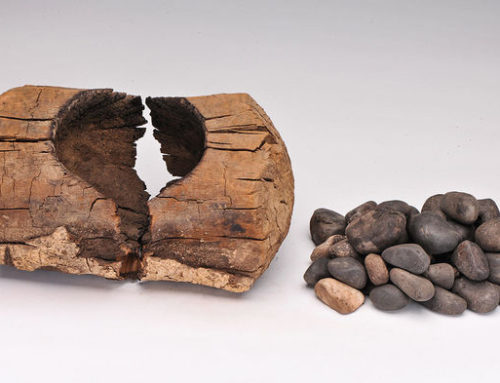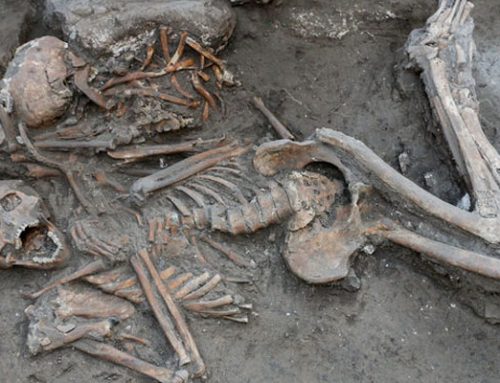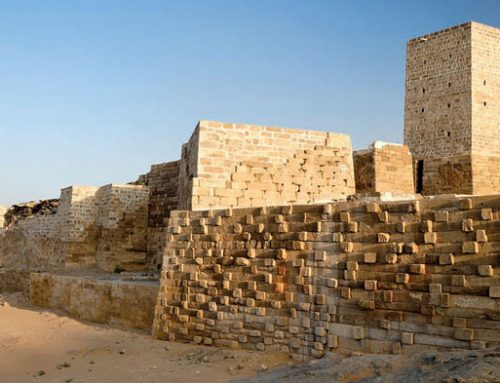
Poppies, shown here with seed pods, have been used to produce opium in the Near East for some 5000 years.
PHOTO: ISTOCK.COM/OZTURK
For as long as there has been civilization, there have been mind-altering drugs. Alcohol was distilled at least 10,000 years ago in the Fertile Crescent, about the same time that agriculture took hold there. Elsewhere, for example in Mesoamerica, other psychoactive drugs were an important part of culture. But the ancient Near East had seemed curiously drug-free—until recently.
Now, new techniques for analyzing residues in excavated jars and identifying tiny amounts of plant material suggest that ancient Near Easterners indulged in a range of psychoactive substances. Recent advances in identifying traces of organic fats, waxes, and resins invisible to the eye have allowed scientists to pinpoint the presence of various substances with a degree of accuracy unthinkable a decade or two ago.

Cypriot jugs were crafted in the shape of the poppy seed pod 3000 years ago.
PHOTO: ROBERT S. MERRILLEES
For example, “hard scientific evidence” shows that ancient people extracted opium from poppies, says David Collard, senior archaeologist at Jacobs, an engineering firm in Melbourne, Australia, who found signs of ritual opium use on Cyprus dating back more than 3000 years. By then, drugs like cannabis had arrived in Mesopotamia, while people from Turkey to Egypt experimented with local substances such as blue water lily.
Some senior researchers are still dubious, pointing out that ancient texts are mostly silent on such substances. Others consider the topic “unworthy of scholarly attention,” Collard says. “The archaeology of the ancient Near East is traditionally conservative.”
But the work is prompting fresh thinking on the relationship between substances and societies. At the International Congress on the Archaeology of the Ancient Near East here last week, for example, one scholar even reinterpreted well-studied ancient images as representing drug-taking rituals and drug-induced distortions.
Drug use almost certainly began in prehistory and spread with migrations. For example, the Yamnaya people, who swept out of Central Asia about 5000 years ago and left their genes in most living Europeans and South Asians (see p. 252 ), appear to have carried cannabis to Europe and the Middle East. In 2016, a team from the German Archaeological Institute and the Free University, both in Berlin, found residues and botanical remains of the plant, which originates in East and Central Asia, at Yamnaya sites across Eurasia. It’s difficult to know whether the Yamnaya used cannabis simply to make hemp for rope or also smoked or ingested it. But some ancient people did inhale: Digs in the Caucasus have uncovered braziers containing seeds and charred remains of cannabis dating to about 3000 B.C.E.
Once people organized into city states, they may also have started large-scale production of pharmaceuticals, says archaeologist Luca Peyronel of the International University of Languages and Media in Milan, Italy. A decade ago, before the onset of Syria’s brutal civil war, he was part of a team that gathered samples from an unusual kitchen in a palace in the northwestern Syrian city of Ebla, which flourished 4 millennia ago on the outskirts of the Sumerian and Akkadian empires.
The room lacked the plant and animal remains typically associated with food preparation. But residue analyses on pots found there may explain the mystery, as Peyronel and his colleagues described in a paper last year: The researchers found traces of wild plants often used for medicine, such as poppy for opium to dull pain, heliotrope to fight viral infections, and chamomile to reduce inflammation. Given that the space contained eight hearths and pots that could hold 40 to 70 liters, the drugs could have been made in large quantities, Peyronel says.
Some of these extracts, such as opium, can induce hallucinations, although it’s unclear whether the potions were used in ritual or medicine. The kitchen’s location near the heart of the palace suggests its products were used for ceremonial occasions, and cuneiform tablets from the building mention special priests associated with ritual beverages, Peyronel says. The distinction between medicine and mind-altering drug may have been lost on ancient peoples. “The two hypotheses are not necessarily at odds,” he adds.
Three hundred kilometers due west and several centuries later, the ancient people of Cyprus used opium in religious ceremonies, Collard says. Residue analyses show that between 1600 and 1000 B.C.E., people poured opium alkaloids into pots crafted in the shape of the seed capsule of the opium poppy, in what Collard calls “prehistoric commodity branding.” All the jugs were found in temples and tombs, suggesting a role in ritual. Opium jugs made on Cyprus have been found in Egypt and the Levant—the first clear example of the international drug trade.
Other substances less well known today may have played a role in healing or ecstatic rituals in the ancient Near East. When King Tutankhamun’s tomb, dating to the 14th century B.C.E., was opened in 1922, archaeologists found the boy-king’s body covered with the flowers of blue water lily, a common motif in many Egyptian tomb paintings. Steeped in wine for several weeks, the plant yields a sedative that produces a calm euphoria.
Diana Stein, an archaeologist at Birkbeck University of London, claims archaeologists have long studied scenes of rituals involving drugs and their effects without realizing it. She argues that the banquet scenes that often adorn small seals found Anatolia, Syria, Mesopotamia, and Iran actually show people imbibing psychoactive potions. Another common motif, interpreted as a scene of contest, may instead represent the internal conflict that results when the imbiber faces an alternative reality, Stein proposes. In these images, “everything is distorted and pulsing—but they certainly knew how to carve things realistically when they wanted to,” she said at the meeting here.
“I find Diana’s arguments convincing and even energizing, as they open up a new avenue for research,” says Megan Cifarelli, an art historian at Manhattanville College in Purchase, New York.
But others are more cautious. “Scholars have tended to shy away from the possibility that the ancient Near Easterners partook of ‘recreational’ drugs, apart from alcohol, so it’s good that someone is brave enough to look into it,” says archaeologist Glenn Schwartz at Johns Hopkins University in Baltimore, Maryland. But he says Stein’s suggestions “seem to go too far on too little evidence,” a view echoed by many at the meeting.
Collard, however, is confident that additional residue and botanical analyses, along with study of iconography and texts, will gradually persuade skeptics. Cifarelli notes that the ancients likely used drugs not just to heal, but to forge sets of beliefs, and contact a spiritual realm where healing and religion were entwined. “Most of us,” she says, “are so far removed from that kind of transformative magic.”




